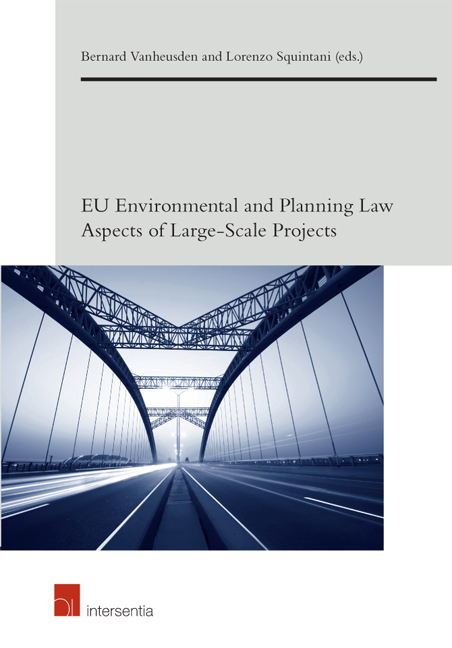Book contents
- Frontmatter
- Contents
- Introduction
- Part I General
- Chapter 1 Environmental Aspects of State Aid for Energy Investment Projects
- Chapter 2 The New 2014 Regulation on Noise-Related Restrictions at EU Airports Help or Hurdle to Noise Management?
- Chapter 3 The EU and the Participation of Civil Society in Large Projects
- Chapter 4 From Host to Investor: Enhancing the Sustainability of CDM Forest Carbon Projects
- Part II Public Participation
- Part III Environmental Impact Assessment
- Part IV Water
- Part V Nature
- Part VI Land Use
- Conclusion: Reconciling Conflicting Values: A Call For Research on Instruments to Achieve Quasi-Sustainability
Chapter 4 - From Host to Investor: Enhancing the Sustainability of CDM Forest Carbon Projects
from Part I - General
Published online by Cambridge University Press: 21 September 2018
- Frontmatter
- Contents
- Introduction
- Part I General
- Chapter 1 Environmental Aspects of State Aid for Energy Investment Projects
- Chapter 2 The New 2014 Regulation on Noise-Related Restrictions at EU Airports Help or Hurdle to Noise Management?
- Chapter 3 The EU and the Participation of Civil Society in Large Projects
- Chapter 4 From Host to Investor: Enhancing the Sustainability of CDM Forest Carbon Projects
- Part II Public Participation
- Part III Environmental Impact Assessment
- Part IV Water
- Part V Nature
- Part VI Land Use
- Conclusion: Reconciling Conflicting Values: A Call For Research on Instruments to Achieve Quasi-Sustainability
Summary
INTRODUCTION
Serving the ultimate goal to ‘stabilize GHGs concentrations in the atmosphere at the level that would prevent dangerous, human-induced climate change’, the UNFCCC has originally recognised forests as both terrestrial sinks and sources of greenhouse gases (GHGs) since 1992. On the one hand, forests are so-called ‘sinks’ because the vegetation and soils contained in forests can absorb and store GHGs, particularly carbon dioxide (CO2), from the atmosphere through the photosynthesis process. Therefore, enhancing forests conservation and planting more trees can reduce atmospheric GHGs and mitigate climate change.
On the other hand, forests can be called ‘sources’ of GHGs emissions because the CO2 absorbed by the forests can be released back into the atmosphere through natural respiration or by human actions such as logging, biofuel consumption and artificial forest fires. This means that the forest storage of the CO2 is not permanent. This non-permanence feature brings challenges and uncertainties to measure forest emission reductions accurately and leads to a controversial negotiation process on this issue.
After the UNFCCC, the Kyoto Protocol to the UNFCCC incorporated land use, land use change and forestry (LULUCF) activities as a method for the committed industrialised countries to comply with their GHGs emission reduction commitments. However, subsequently, the Marrakech Accords narrowed down the scope of legitimate LULUCF projects hosted in developing countries. Firstly, it stipulates that only afforestation and reforestation (A/R) projects in developing countries can produce measurable CERs in the CDM regime. Afforestation and reforestation refer to tree planting activities on lands without forests for at least 50 years or lands which used to be forests before 1989. Activities reducing emissions from deforestation and forest degradation plus the conservation, sustainable management of forests and enhancement of forest carbon stocks in developing countries (REDD+) were excluded from the CDM and have remained undecided in the negotiations since 2005. Secondly, it stipulates that the CERs from CDM A/R projects have temporary validities and limits the maximum amount of the CERs that can be used from CDM A/R projects to meet the commitments for the first commitment period (2008–2012) to five percent. As a cost-effective compliance method, the CDM was adopted in the Kyoto Protocol. The CDM allows industrialised countries to invest in projects hosted in developing countries and to purchase cheaper certified emission reductions (CERs) from the projects.
- Type
- Chapter
- Information
- Publisher: IntersentiaPrint publication year: 2016



